Born: August, 14th 1941. Died: January 19th, 2023.
David Crosby, the outspoken and often-troubled singer, songwriter and guitarist, who has died at the age of 81, helped create two of the most influential and beloved American bands of the classic-rock era of the 1960s and 1970s, The Byrds and Crosby, Stills, Nash & Young.
Crosby was inducted twice into the Rock & Roll Hall of Fame, as a founding member of The Byrds and as a founder of Crosby, Stills, Nash & Young. He brought jazz influences to both groups, in the process broadening the possibilities of vocally driven folk-rock. And his reach extended to later generations: his alternate tunings became an inspiration for the innovative “freak folk” movement of the early 21st century while influencing scores of other musicians eager to give acoustic music a progressive spin.
If Crosby’s music expanded boundaries, his persona fixed him in a specific era — and proudly so. In 1968 he wrote Triad, an ode to free love, recorded in distinct versions by The Byrds, Jefferson Airplane and Crosby, Stills, Nash & Young. His song Almost Cut My Hair, which he recorded with Crosby, Stills, Nash & Young for their acclaimed 1970 album, Déjà Vu, was a virtual loyalty oath to the counterculture.
RM Block
Crosby’s image as the twinkle-eyed stoner and sardonic hedonist of the cosmic age was said to have been a model for the obstinate free spirit played by Dennis Hopper in the 1969 movie Easy Rider.
His impish indulgences turned potentially lethal many times. He became nearly as well known for his drug offences, weapons charges and prison stints as for his music. By the mid-1970s he was addicted to both cocaine and heroin.
“You don’t sit down and say, ‘Gee, I think I’ll become a junkie,’” Crosby told People magazine in 1990. “When I started out doing drugs, it was marijuana and psychedelics, and it was fun. It was the 1960s, and we thought we were expanding our consciousnesses.”
But later, he said, drugs became more for blurring pain. “You don’t realise you’re getting as strung out as you are. And I had the money to get more and more addicted.”
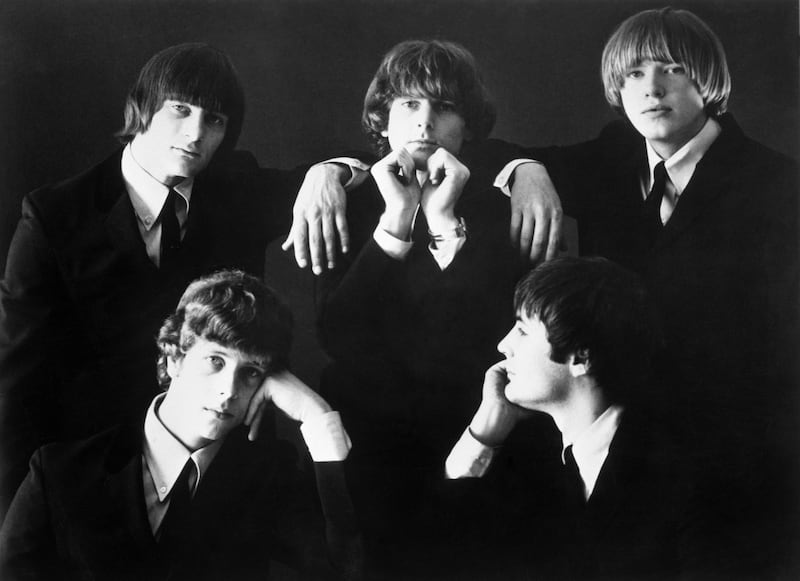
Crosby’s drug abuse may have exacerbated his medical problems, including a long battle with hepatitis C, which necessitated a liver transplant in 1994. He also suffered from Type 2 diabetes and, in 2014, had to cancel a tour to endure a cardiac catheterisation and angiogram.
Despite his health issues, his voice remained robust enough in those years for him to tour. And in his best moments while performing with Stephen Stills and Graham Nash, he could re-create some of the most famous harmonies of the rock era. His voice remained strong as well when touring with his solo band in later years.
David Van Cortland Crosby was born on August 14th, 1941, in Los Angeles into families with deep roots in American history dating to Dutch rule in New York in the 17th century. His mother, born Aliph Van Cortland Whitehead, descended from the prominent Van Cortland family. His father, Floyd Crosby, an Academy Award-winning cinematographer whose credits included the classic Western High Noon, was a member of the Van Rensselaer clan.
David attended Crane Country Day School in Montecito, California, where he starred in the Gilbert and Sullivan operetta HMS Pinafore and other musical productions, but he flunked out. He completed his high-school studies by correspondence at the Cate School in nearby Carpinteria. He studied drama at Santa Barbara City College, but he dropped out before graduating to pursue a music career.
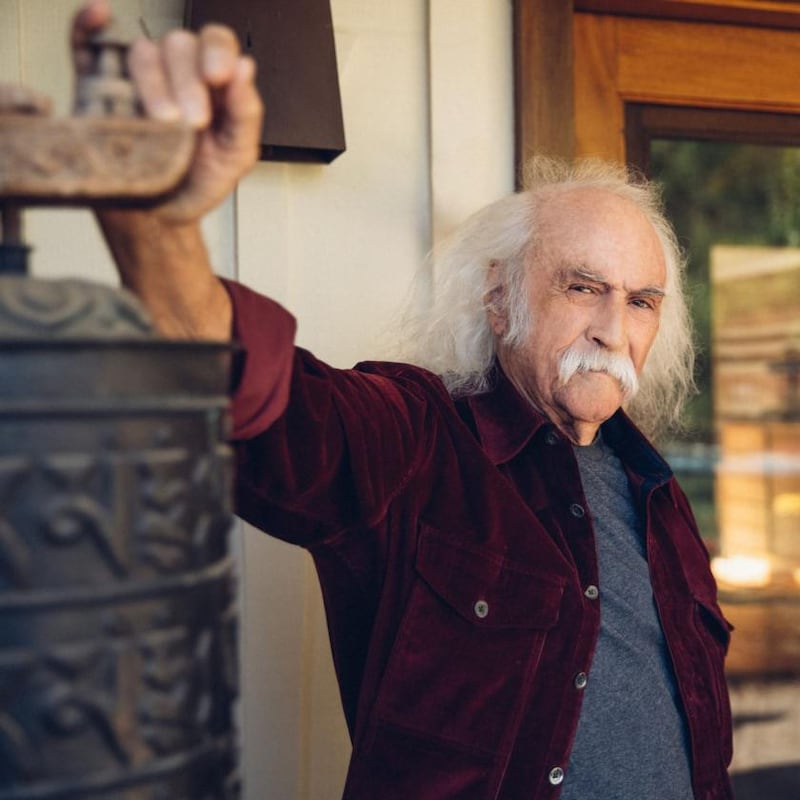
He was 16 when he received his first guitar, from his older brother, Ethan, who had begun playing years earlier. David started out, like so many others in the early 1960s, performing folk music.
“I would learn two chords and go back and forth between them,” Crosby told the British music magazine Mojo. “What took it to the next level was, my brother started listening to 1950s jazz: Chet Baker, Dave Brubeck, people like that. Listening to jazz really widens your world.”
Crosby also absorbed the music of The Everly Brothers, which taught him how to layer harmonies into diaphanous patterns. He first performed with his brother, but he soon went solo and drifted through coffee houses around the country until landing in New York City, in the epicentre of the 1960s folk movement, Greenwich Village. In 1963 he cut his first demos, produced by Jim Dickson, who would later manage The Byrds.
Crosby, who briefly played with folk group Les Baxter’s Balladeers in Los Angeles, got to know Jim McGuinn (who later changed his name to Roger) and Gene Clark while they were performing as a duo at the Troubadour. He soon began adding his harmonies to theirs onstage, fitting in so smoothly that they became a trio, known as The Jet Set.
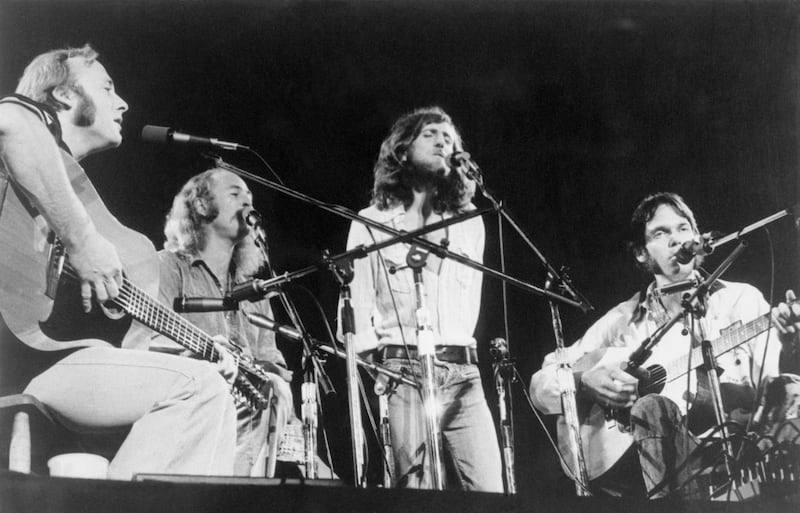
Crosby brought in Dickson to become the group’s manager. Dickson encouraged them to advance the new sound they had already been exploring, which combined their earlier folk influences with the electrified sound of the British Invasion bands, particularly The Beatles. To that end the band added a drummer, the inexperienced but handsome Michael Clarke, and Crosby took up the electric guitar. Together, the revolutionary style they honed became known as folk-rock.
That hybrid found its first recorded expression after Dickson acquired an acetate of a new Bob Dylan song, Mr Tambourine Man, in August 1964. The band’s own demo of the piece, with the newly recruited Chris Hillman on bass, helped land them a contract with Columbia Records that November. Two weeks later The Jet Set changed their name to The Byrds.
Columbia, however, felt that the group hadn’t yet jelled musically, so only McGuinn was allowed to play an instrument on the single, which came out in April 1965, with studio musicians accompanying him. Crosby and Clark did provide impeccable harmonies on the song, which helped it reach No 1 on the Billboard singles chart. The song was the title track of their debut album, released in June 1965, and the full band played on the rest of the tracks.
Crosby didn’t contribute compositions to The Byrds’ first two albums. But on their third, Fifth Dimension (1966), he and Hillman helped fill a writing void left by the departure of the band’s most prolific songwriter, Clark. Crosby contributed to the composition of several songs on the album and wrote one himself, What’s Happening?!?! Its lyric introduced a Crosby-esque motif: posing questions that had no answer. More famously, Crosby wrote the band’s smash hit Eight Miles High with McGuinn and Clark.
For The Byrds’ next album, Younger Than Yesterday, Crosby contributed Everybody’s Been Burned, which idealised the key strategy of his emerging style: to contrast a dreamy melody with dazed lyrics.
A more daring number helped seal Crosby’s fate with the band. He had written Triad for the fifth Byrds album, and the band recorded it. But the other members were reluctant to release it, preferring instead Goin’ Back, written by Gerry Goffin and Carole King. Crosby vigorously argued against using outside writers for a band that already had three, and tension in the band grew. There was anger, too, over political speeches he had made between songs when the band played the Monterey Pop Festival the summer before. All of it led to his firing.
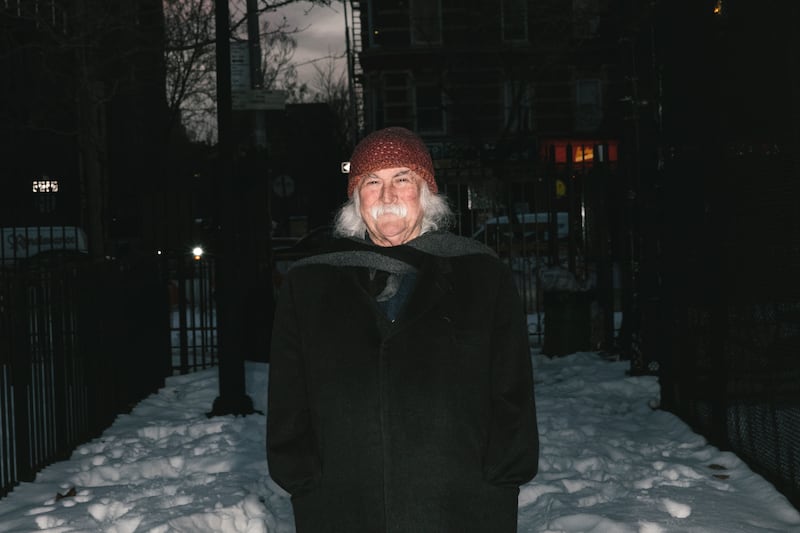
McGuinn and Hillman delivered the crushing news. They “said I was impossible to work with, and I wasn’t very good anyway, and they’d do better without me,” Crosby told the British music magazine Uncut. “It hurt like hell. I didn’t try to reason with them. I just said, ‘It’s a shameful waste … Goodbye’.”
By this time Crosby had already started casually jamming with Stills, a guitarist and singer whose group Buffalo Springfield had recently disbanded. Crosby wrote his first song with Stills (along with Paul Kantner of Jefferson Airplane) while sailing on 25m boat he had acquired a year earlier. The song, Wooden Ships, also recorded by the Airplane, tested out the vocal blend that would become Crosby, Stills & Nash’s signature.
Crosby and Stills connected with Nash in July 1968 at a party at Joni Mitchell’s house in the Laurel Canyon section of Los Angeles. Nash was eager to leave his slick British pop act, The Hollies, to join the hot folk-rock scene. The three began meeting on their own to perfect their sound, and when Ahmet Ertegun, president of Atlantic Records, heard their elegant three-way vocal braiding, he signed them to his label.
The group’s debut album, titled simply Crosby, Stills & Nash, was released in May 1969 and shot into the Top 10. It earned them a Grammy as best new artist. Besides Wooden Ships, the album included two other songs by Crosby, the shimmering Guinevere and the elegiac Long Time Gone, which he wrote after the assassination of Robert F Kennedy in 1968.
That same year, his longtime girlfriend, Christine Hinton, was killed in a car crash while running a routine errand. Crosby later saw this as the tipping point that sent him into depression and serious drug use.
“I was unable to handle it,” he told People magazine. “I was very much in love with her and she just never came back. That was when I got more into hard drugs.”
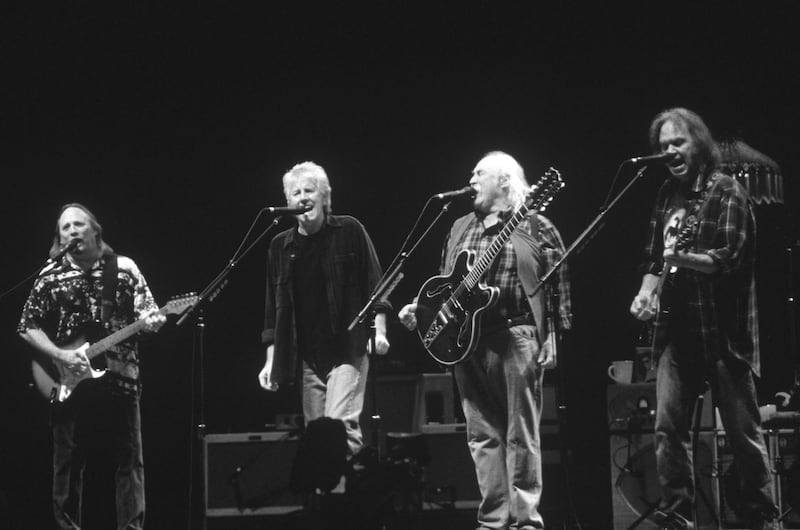
His increasing recreational drug use made it harder for him to create music, he said, but he nevertheless managed to write two classic songs for the band’s follow-up album, Déjà Vu, released in 1970, which officially expanded the group’s lineup to include Neil Young: Almost Cut My Hair and the title track, a rhythmically daring number with complex harmonies.
Fuelled by drugs and egos, the group quickly began to fracture. Over the next year, all four members released solo albums. Crosby’s, If I Could Only Remember My Name, released in 1971, sold well, but it was the least well received in its day. Robert Christgau of the Village Voice called it a “disgraceful performance”. Crosby would not record another solo album for 18 years. But in later years it received a critical overhaul; in his 1994 book, All Time Top 1,000 Albums, Colin Larkin called it miraculous.
Starting in 1972, Crosby released a series of successful albums with Nash, his closest ally in the band. All three of their first joint albums went gold, buoyed by Nash’s more commercial tunes.
In 1973 Crosby reunited with the four other original Byrds for one album, but it was poorly received. For much of the 1970s, he also worked as a session singer, backing up star friends such as Jackson Browne and James Taylor. In the 1980s and 1990s he did similar work with Phil Collins.
Crosby, Stills and Nash, and sometimes Young, reunited from time to time. But by the 1980s, Crosby was increasingly running afoul of the law.
He spent nine months in a Texas prison in 1982 on drug and weapons charges. In 1985, he was arrested on charges of drunken driving, hit-and-run, and possession of a concealed pistol, and was imprisoned for a year. By his account, he quit hard drugs in 1986. But in March 2004 he was charged with criminal possession of a weapon in the third degree, as well as illegal possession of a hunting knife, ammunition and marijuana. He pleaded guilty and got off with a fine.
Crosby detailed his travails in two harrowing autobiographies, Long Time Gone (1988) and Since Then: How I Survived Everything and Lived to Tell About It (2006), both written with Carl Gottlieb.
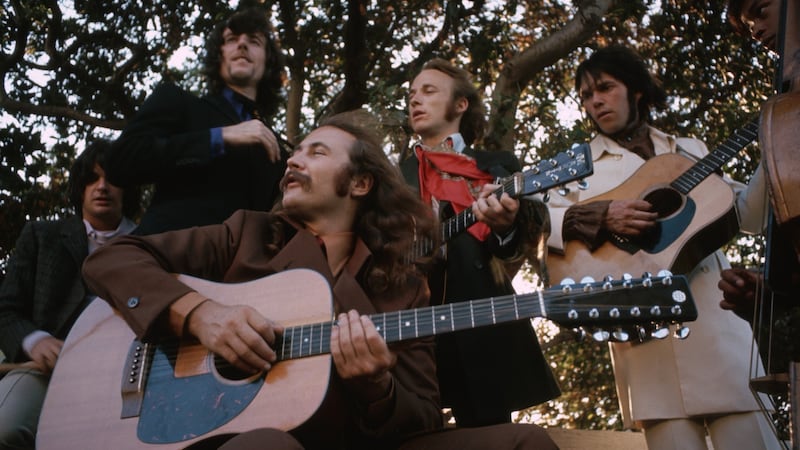
He earned less-fraught tabloid headlines in 2000 when he was revealed to be the biological father, via sperm donation, of the two children of the singer Melissa Etheridge and her partner at the time, Julie Cypher.
Crosby had first become a father in 1962 with Celia Crawford Ferguson, but as young parents they put their son up for adoption. He had three other children: Erika, by his former girlfriend Jackie Gutherie; Donovan, by another partner, Debbie Donovan; and Django, with Dance, his wife of 35 years. His brother killed himself in the late 1990s. His survivors include his wife and four children.
In 1997 Crosby reunited with the son he had put up for adoption, James Raymond, who had grown up to become an accomplished pianist. With the session guitarist Jeff Pevar, they formed a jazz-rock band, which they cheekily called CPR.
In 2014 Crosby released his first solo album in 21 years, Croz, which debuted in the Billboard Top 40. It ushered in one of the most prolific periods in his career, in which he released five solo albums, most recently For Free (2021).
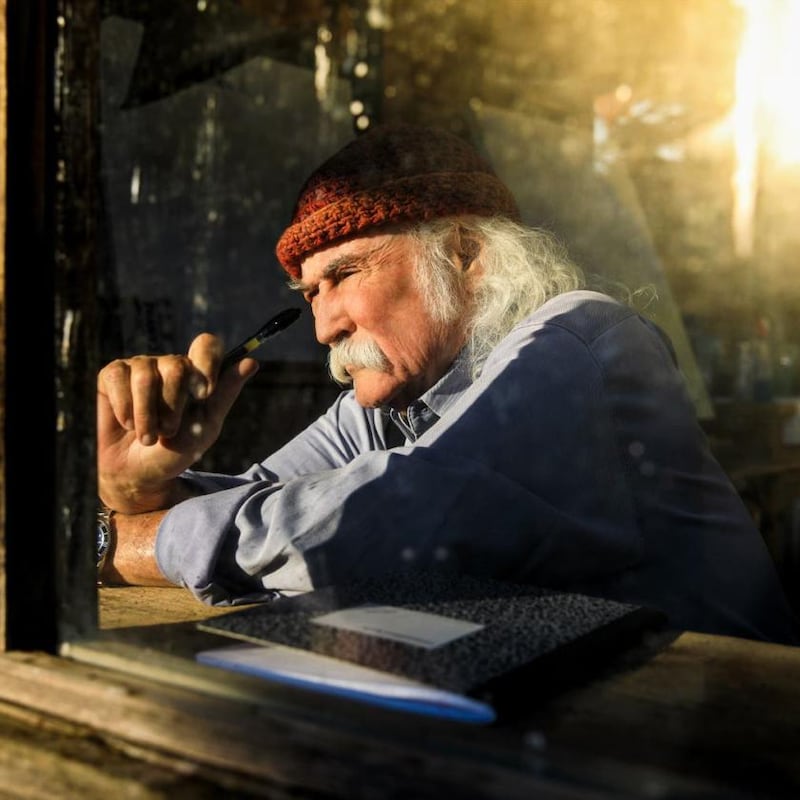
Crosby told the Orange County Register in 2019 that his late-in-life resurgence was sparked by his realisation that “at this stage, you don’t know if you’ve got two weeks or 10 years”, saying, “Really what matters is what you do with whatever time you have”.
Crosby announced in 2022 that although he planned to continue making records, he would no longer tour. “I’m too old to do it any more,” he said. “I don’t have the stamina; I don’t have the strength.” (He recently said that he had reconsidered.)
In 2019 he was the subject of an uncommonly frank documentary, David Crosby: Remember My Name, directed by AJ Eaton and produced by Cameron Crowe. In the film the famously cantankerous Crosby talks about how he had alienated nearly all of his old musical associates, even his longtime ally Nash. “All the guys I made music with won’t even talk to me,” he said. “I don’t know quite how to undo it.”
Adopting a more appreciative tone, Crosby looked back at his life with wonder in his second memoir. “I was tremendously lucky, surviving injury, illness and stupidity,” he wrote. “As for the music, I was blessed early and often, from the Byrds to Crosby, Stills, Nash and Young, singing with Graham, meeting my son and creating CPR” and experiencing “the wonderful, exploratory forward motion of new music”. — This article originally appeared in The New York Times



















